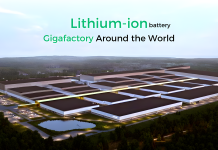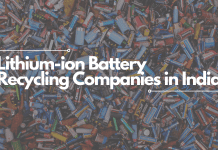Table of Contents
Future of EV Battery
The EV race has been on track for a few years now, with many companies having a go at research and innovation. EVs have been slated and almost accepted as the next logical step in the evolution of transport. We are also simultaneously working on green energy, mainly in the form of solar. This progress in the green energy field is needed as that is what will truly allow us to let go of our dependency on fossil fuels. It would be ideal if the seminal step ahead is applicable at a large scale all over the world and not something that takes years to trickle down to areas with lesser resources.
The main components that make these cars possible are the batteries and motors. All the other things are there to mostly supplement these two. For EVs, the batteries are the most crucial part at this point as it is also the one part that needs the most progress.
Current Challenges in EV Battery Technology
Currently, EV batteries are lithium-ion. Disposal or recycling of these batteries is tough. They are also heavy, although that has been used to advantage as well. Brands place the batteries in a manner that brings the center of gravity low, making the car much more stable.
Solid-State Batteries: A Promising Step into the Future
One of the steps into the future has been promising research with solid-state batteries. These have a much higher energy density, meaning they can carry more charge when compared to lithium-ion batteries. This density can be up to 10 times, which is a massive difference. The lack of a liquid solution also reduces the chances of explosions or fires. This is a great help with accidents.
Lower charging times are also a winning factor as this would be a matter of pure convenience when is on the go, especially on longer drives. Solid-state batteries also have more charge cycles and thus a much longer life possibly up to 10 years.
The Search for an Ideal Solid Electrolyte
The major issue that is halting solid-state batteries is quite a tough one to crack. Companies are severely struggling to find a solid electrolyte that is inert, can handle the expansion and contraction from use, and is efficient with conducting ions. Getting this material right with all the needs balanced out well is where the issue lies.
Graphene batteries are also a great option. But as the material is currently expensive to produce at mass scales, they are not taking up the baton from lithium-ion batteries any time soon either. The smaller tests have proven their usability and many advantages, but large-scale application is needed for it to make a difference.
Mass Production Challenges and Timeline
Some brands are claiming that they will start mass production of these batteries by 2025, but experts in the field say a decade sounds more realistic. That is a lot of time, and hopefully, something falls into place earlier as the environment is taking a hit. The effect on human lives is undeniable even if this process has happened on earth many times before. Humanity is tied to these technologies, with the hopes to make life easier and making our air cleaner so we are not breathing chemicals that are slowly killing us.







